Germany
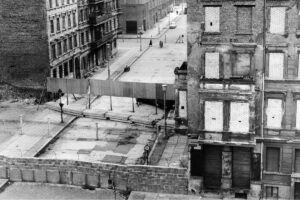
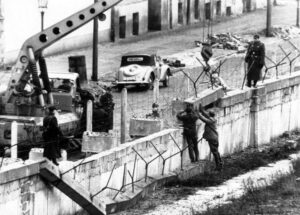 In August of 1961, virtually overnight, the Berlin appeared, separating East and West Berliners from each other. Streets, subway lines, bus lines, tramlines, canals, and rivers were divided. Family members, friends, lovers, schoolmates, work colleagues, and others were abruptly separated. For many, life was put on hold. That meant that families were instantly separated from each other, and there was nothing anyone could do about it. If a child was spending the night with a grandparent, they now had to stay there. If couples were separated, possibly due to jobs or something, they couldn’t get back together. Families who lived on opposite sides of town, couldn’t see each other. No recourse. All the families could do was stand beside the wall and talk to each other.
In August of 1961, virtually overnight, the Berlin appeared, separating East and West Berliners from each other. Streets, subway lines, bus lines, tramlines, canals, and rivers were divided. Family members, friends, lovers, schoolmates, work colleagues, and others were abruptly separated. For many, life was put on hold. That meant that families were instantly separated from each other, and there was nothing anyone could do about it. If a child was spending the night with a grandparent, they now had to stay there. If couples were separated, possibly due to jobs or something, they couldn’t get back together. Families who lived on opposite sides of town, couldn’t see each other. No recourse. All the families could do was stand beside the wall and talk to each other.
From the time of its construction, it was more than two years after before anyone was able to cross from one side of the wall to the other. In the meantime, children grew, children were born, people died. Some children and grandchildren never got to see their parents or grandparents again. The whole purpose of the Berlin Wall was to force the people in East Berlin to accept communism. The only way they “might be able” to stay alive was to comply. So, the citizens of East Berlin became virtual prisoners overnight. Their sentence was long, and they had no trial. They were simply locked up in their own city.
The “sentence” continued for more than two years, before anything changed. Then, finally, on December 20, 1963, nearly 4,000 West Berliners were allowed to cross into East Berlin to visit relatives. It was called a “one-day pass” and didn’t mean the end of the siege. Nevertheless, it was a moment of hope. The day was a result 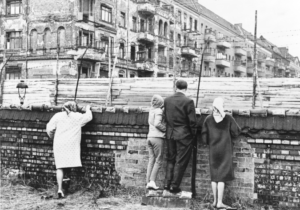
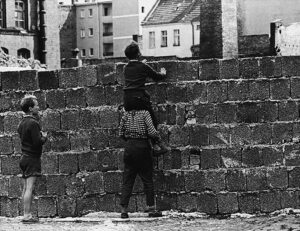 of an agreement reached between East and West Berlin. Eventually, over 170,000 passes were issued to West Berlin citizens, each pass allowing a one-day visit to communist East Berlin. Of course, there would be no passes for East German citizens to visit the west. The government knew they would not come back.
of an agreement reached between East and West Berlin. Eventually, over 170,000 passes were issued to West Berlin citizens, each pass allowing a one-day visit to communist East Berlin. Of course, there would be no passes for East German citizens to visit the west. The government knew they would not come back.
The day was marketed as a “wonderful government” doing some kind of a great thing. There were also moments of poignancy and propaganda. The reunions who were filled with tears, laughter, and other outpourings of emotions as mothers and fathers, sons and daughters finally met again. They were grateful, if only for a short time. The tensions of the Cold War were ever close by.
As people crossed through the checkpoints, loudspeakers in East Berlin greeted them. They were told that they were now in “the capital of the German Democratic Republic,” a political division that most West Germans refused to accept. The propaganda continued as each visitor was given a brochure that explained that the wall was built to “protect our borders against the hostile attacks of the imperialists.” They were told that decadent western culture, including “Western movies” and “gangster stories,” were flooding into East Germany before the wall sealed off such dangerous trends. The picture they were painting was of the East German government being the “saviors of the morality” of the people.
The West Berliners weren’t terribly happy either and many newspapers charged that the visitors charging that they were just pawns of East German government propaganda. It was said that the whole thing was a ploy to 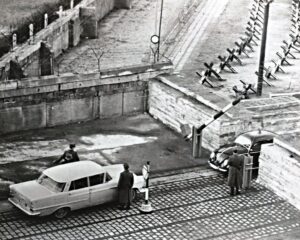
 gain West German acceptance of a permanent division of Germany. Whatever the case may be, the visitors felt that they had no choice to comply with the rules, because their hearts were being torn out by these separations. The separation continued until President Reagan called for the wall to be torn down in a speech in West Berlin on June 12, 1987…almost 26 years after it was built.
gain West German acceptance of a permanent division of Germany. Whatever the case may be, the visitors felt that they had no choice to comply with the rules, because their hearts were being torn out by these separations. The separation continued until President Reagan called for the wall to be torn down in a speech in West Berlin on June 12, 1987…almost 26 years after it was built.
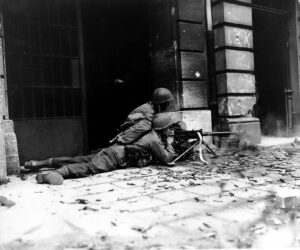
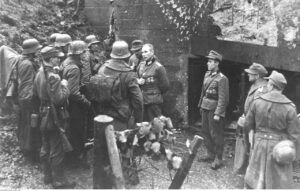 The Nazis were famous for taking no thought for the people around them, as long as they go what they wanted. Achen, Germany was one example of that lack of care and compassion. In October of 1944, the city has been incorporated into the Siegfried Line (known as the Hindenburg Line to the Americans). The Siegfried Line was the main defensive network on Germany’s western border.
The Nazis were famous for taking no thought for the people around them, as long as they go what they wanted. Achen, Germany was one example of that lack of care and compassion. In October of 1944, the city has been incorporated into the Siegfried Line (known as the Hindenburg Line to the Americans). The Siegfried Line was the main defensive network on Germany’s western border.
Fighting around Aachen began as early as the second week of September. It was a period of time known to the Germans as the “First Battle of Aachen.” At that time, the city was defended by the 116th Panzer Division. A panzer division was “a combined arms formation, having both tanks, (German: Panzerkampfwagen, which means armored fighting vehicle, usually shortened to “Panzer”), mechanized and motorized infantry, along with artillery, anti-aircraft and other integrated support elements.” The Panzer Division was under the command of General Gerhard von Schwerin. The proximity of Allied forces made the city officials very nervous, and quickly caused the majority of the city’s government officials to desert their post, long before the evacuation of its citizens was complete. While most of us would be furious over this desertion, Hitler had taken it one step further, by stripping each of the deserting officials of their rank and sending them to the Eastern front as privates. Rather a fitting punishment, but I seriously doubt if Hitler cared about the people. He wanted the officials there for war purposes. Then, in the greatest atrocity, instead of continuing the evacuation, von Schwerin decided to surrender the city to Allied forces. He would have had no idea if the Allies would trat the people kindly or not, but then he really didn’t care. However, on September 13, before he could deliver a letter of capitulation he had written, von Schwerin was ordered to launch a counterattack against American forces penetrating southwest of Aachen. Reluctantly he followed the orders, probably because he fear Hitler more than the Allied forces. He used elements of his panzergrenadier (the motorized infantry) forces. The German general’s Treasonous act when he attempted to surrender the city was irrelevant now, because his letter was never delivered. Unfortunately for him, it fell into the hands of Adolf Hitler, who ordered the general’s immediate arrest. He was replaced by Colonel Gerhard Wilck.
The United States’ VII Corps continued to push German defenses, despite the resistance they encountered on September 12th and 13th. Between September 14 and 16, the US 1st Infantry Division continued its advance in the face of strong defenses and repeated counterattacks, ultimately creating a half-moon arc around the city. Unfortunately, this slow advance came to a halt in late September, due to the supply problem, and the diversion of existing stocks of fuel and ammunition for Operation Market Garden in the Netherlands.
During what would then be known, to the Germans at least, the second Battle of Aachen, American and German forces in and around Aachen, Germany, fought for supremacy between October 2 and 21, 1944. The 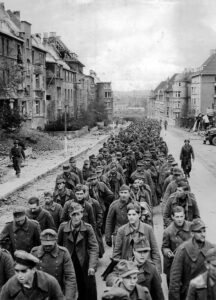
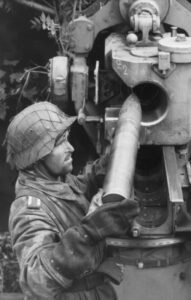 Allies needed the city to advance into the industrialized Ruhr Basin, whether they wanted to fight a battle in the city or not. Although most of Aachen’s civilian population was evacuated before the battle began, much of the city was destroyed and both sides suffered heavy losses. The people would have nothing to come home to. It was one of the largest urban battles fought by US forces in World War II. Aachen was also the first city on German soil to be captured by the Allies. The battle ended with a German surrender, but their tenacious defense significantly disrupted Allied plans for the advance into Germany. The Battle of Aachen had cost both the Americans and Germans dearly; the former suffered over 7,000 casualties, while the latter lost over 5,000 casualties and 5,600 taken prisoner.
Allies needed the city to advance into the industrialized Ruhr Basin, whether they wanted to fight a battle in the city or not. Although most of Aachen’s civilian population was evacuated before the battle began, much of the city was destroyed and both sides suffered heavy losses. The people would have nothing to come home to. It was one of the largest urban battles fought by US forces in World War II. Aachen was also the first city on German soil to be captured by the Allies. The battle ended with a German surrender, but their tenacious defense significantly disrupted Allied plans for the advance into Germany. The Battle of Aachen had cost both the Americans and Germans dearly; the former suffered over 7,000 casualties, while the latter lost over 5,000 casualties and 5,600 taken prisoner.
 Man has always been interested in the stars and planets, even before we really knew what they were. Those mysterious lights in the sky that somehow just showed up every night and disappeared every morning, only to be replaced with the bright sunlight, quickly became a part of our lives from the time we were born. The main thing that has changed over the centuries is the equipment with which we could view space for ourselves.
Man has always been interested in the stars and planets, even before we really knew what they were. Those mysterious lights in the sky that somehow just showed up every night and disappeared every morning, only to be replaced with the bright sunlight, quickly became a part of our lives from the time we were born. The main thing that has changed over the centuries is the equipment with which we could view space for ourselves.
On September 23, 1846, Johann Gottfried Galle, a German astronomer from Radis, Germany, at the Berlin Observatory with the assistance of student Heinrich Louis d’Arrest, was the first person to view the planet Neptune and know what he was looking at. Of course, other astronomers had seen other planets, but this was the first time anyone actually saw the eighth planet in our solar system. Neptune was believed to be out there in that position, as French astronomer Urbain-Jean-Joseph Le Verrier had calculated the approximate location of the planet to be. Le Verrier, by studying gravity-induced disturbances in the  motions of Uranus guessed that another planet was there. He then told Galle of his findings on the 23rd, and the same night Galle and his assistant Heinrich Louis d’Arrest identified Neptune at their observatory in Berlin. Basically, they looked at its movement against a background of stars over 24 hours and that confirmed that it had to be a planet…seeing a place where the stars were blocked by “something” or in this case, Neptune.
motions of Uranus guessed that another planet was there. He then told Galle of his findings on the 23rd, and the same night Galle and his assistant Heinrich Louis d’Arrest identified Neptune at their observatory in Berlin. Basically, they looked at its movement against a background of stars over 24 hours and that confirmed that it had to be a planet…seeing a place where the stars were blocked by “something” or in this case, Neptune.
Neptune is a blue gas giant, which has a diameter four times that of Earth. The astronomers named it after the Roman god of the sea…why do they always use the Greek or in this case Roman gods? Neptune has eight known moons, of which Triton is the largest. It also has a ring system containing three bright and two dim rings. It completes an orbit of the sun once every 165 years. Since Pluto was “deplanetized” in 2006, because it was demoted to dwarf planet, Neptune became the farthest known solar planet. While it may be the furthest out, it  is not the smallest, but rather it’s the fourth-largest planet by diameter, the third-most-massive planet, and the densest giant planet. Neptune’s mass is 17 times the mass of Earth, and slightly more massive than its near-twin Uranus. Neptune is more dense and physically smaller than Uranus, because its greater mass causes more gravitational compression of its atmosphere. It is referred to as one of the solar system’s two ice giant planets
is not the smallest, but rather it’s the fourth-largest planet by diameter, the third-most-massive planet, and the densest giant planet. Neptune’s mass is 17 times the mass of Earth, and slightly more massive than its near-twin Uranus. Neptune is more dense and physically smaller than Uranus, because its greater mass causes more gravitational compression of its atmosphere. It is referred to as one of the solar system’s two ice giant planets
In 1989, the US spacecraft Voyager 2 was the first human spacecraft to actually visit Neptune. Nevertheless, while much more has been learned about the eighth planet, the first person to actually find it was Johann Gottfried Galle, way back in 1846.

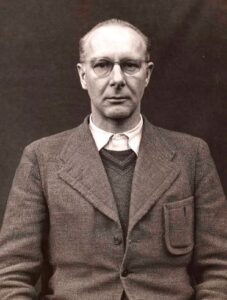 Until August 18, 1941, Adolf Hitler had been systematically murdering the mentally ill and developmentally disabled people in Germany, but word was getting out, and the “good” people of Germany were understandably outraged by such an evil practice. The people began protesting, and in an effort to avoid rioting, Hitler announced on this day in 1941, that the practice would cease. I’m sure the people were glad, and they most likely thought they had won this battle, but as we all know, Adolf Hitler is a man who lies…in fact it was all lies!!
Until August 18, 1941, Adolf Hitler had been systematically murdering the mentally ill and developmentally disabled people in Germany, but word was getting out, and the “good” people of Germany were understandably outraged by such an evil practice. The people began protesting, and in an effort to avoid rioting, Hitler announced on this day in 1941, that the practice would cease. I’m sure the people were glad, and they most likely thought they had won this battle, but as we all know, Adolf Hitler is a man who lies…in fact it was all lies!!
The killing began in 1939, when head of Hitler’s Euthanasia Department, Dr Viktor Brack oversaw the creation of the T.4 program. At first, the program began systematically killing of children deemed “mentally defective.” Children were transported from all over Germany to a Special Psychiatric Youth Department, after being told that the children were going to be treated there, but they were killed instead. Parents were told that their children had become ill, and simply died. Later, because of Hitler’s hatred mainly for Jewish people, certain criteria were established for non-Jewish children. Even if they “qualified” to be killed because of their mental issues, they had to be “certified” mentally ill, schizophrenic, or incapable of working for one reason or another before they could be killed. Jewish children already in mental hospitals, whatever the reason or whatever the prognosis, were automatically to be subject to the program and killed. The victims were either injected with lethal substances or were led to “showers” where the children sat as gas flooded the room through water pipes. Later the program was expanded to include adults.
As this practice continued, the people started getting angry, and before long protests began mounting within Germany, especially by doctors and pastors. A few of these people even had the courage to write Hitler directly and describe the T.4 program as “barbaric” but others circulated their opinions more discreetly. Heinrich Himmler, head of the SS and the man who would direct the systematic extermination of European Jewry, had only one regret: that the SS had not been put in charge of the whole affair. “We know how to deal with it correctly, without causing useless uproar among the people.”
In 1941, when Bishop Count Clemens von Galen denounced the euthanasia program from his pulpit, Hitler decided that he did not need such publicity. He ordered the program suspended but didn’t tell the German people that the suspension was only to be in Germany. Still, even though it was suspended in Germany, 50,000 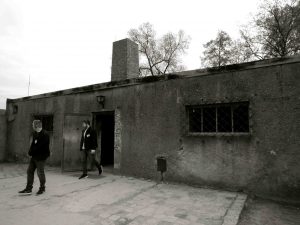
 people had already fallen victim to the hideous program. Then came the “other shoe dropping” as the practice was picked up in earnest in occupied Poland. Hitler was a liar, and he was evil. He assumed that the people of the world were stupid, and he could hide his horrific practice from them. Stopping the practice in the name of humane practices…not!! Lies!! All of it!!
people had already fallen victim to the hideous program. Then came the “other shoe dropping” as the practice was picked up in earnest in occupied Poland. Hitler was a liar, and he was evil. He assumed that the people of the world were stupid, and he could hide his horrific practice from them. Stopping the practice in the name of humane practices…not!! Lies!! All of it!!
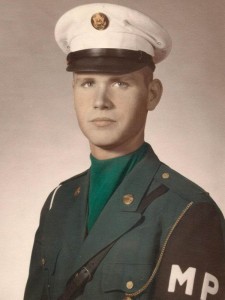
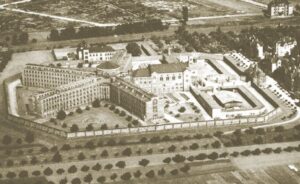 My brother-in-law, LJ Cook was an MP in the Army from 1968 to 1971, which was the Vietnam Era. For a long time, that was all I knew about his time of service. Today, that has all changed. I think I thought of MPs as maybe handling the disobedient military personnel, maybe like the movie, “Stripes” or the show, “MASH,” but movies rarely tell the whole story on these things. LJ went through basic training in Fort Ord, located in the Monterey Bay area of California. Following his basic training, LJ was sent to MP school at Fort Gordon located southwest of Atlanta, Georgia. Following his MP training, LJ flew into Frankfort, Germany, and then on to Mannheim, Germany, where he would spend the remainder of his military service as an MP at the Mannheim Prison.
My brother-in-law, LJ Cook was an MP in the Army from 1968 to 1971, which was the Vietnam Era. For a long time, that was all I knew about his time of service. Today, that has all changed. I think I thought of MPs as maybe handling the disobedient military personnel, maybe like the movie, “Stripes” or the show, “MASH,” but movies rarely tell the whole story on these things. LJ went through basic training in Fort Ord, located in the Monterey Bay area of California. Following his basic training, LJ was sent to MP school at Fort Gordon located southwest of Atlanta, Georgia. Following his MP training, LJ flew into Frankfort, Germany, and then on to Mannheim, Germany, where he would spend the remainder of his military service as an MP at the Mannheim Prison.
Construction on Mannheim Prison was started in 1905 and it first opened for use in 1909. It was a Third Reich prison until after World War II. Then it was used for United States military purposes during the Vietnam War. The prison included a separate hospital building, which until 1945 was used to treat ill prisoners throughout the region. The prison was considered modern for the time, with each cell having running water with a toilet and a washbasin, central heating and electric light. As with all prisons in Third Reich Germany, Mannheim Prison was used to incarcerate standard criminal convicts as well as political prisoners.
LJ was a Maximum Confinement Section Chief during his time at Mannheim Prison. The correctional officers lived in the barracks on site during their off time. LJ was part of the 77th MP Company, which at that time was the biggest company in army. The prison also had two chapels, two mess halls, and it was a large enough place that LJ didn’t know everyone stationed there…even after three years. When an MP first arrives at Mannheim Prison, they are settled into the squad bay in the attic of the barracks. This is really temporary housing until they can be officially assigned. Most of the rooms in the main barracks (specifically for the Non-NCO personnel) have four men to a barracks. The NCOs had two men to a room. And the higher-ranking officers had a private room. Lynn’s highest rank was that of Acting E7, but his permanent rank was Seargent. He could have been given the permanent rank of E7, if he had wanted to re-enlist for six more years. He did not. He would have also been sent to Vietnam had he re-enlisted.
During his time at Mannheim Prison, LJ saw three or four prison riots, all of which the MPs squashed. The prisoners at Mannheim Prison were American GIs in prison for everything from being AWOL to murder. Of course, riots happened when the prisoners overpowered a guard. That seems like an unlikely possibility, but the prison, with four blocks, A, B, C, and D, with each block having 8 cells, each holding 30 to 40 prisoners. Cells were made of steel bars so, no privacy. A guard was sometimes in the cell with the men, and you just didn’t take a gun in there, on the off chance that a prisoner could take it from you. The guards were armed with night sticks, as their only weapon. During the riots, while LJ was there, no guards were killed, but there were a number of incidences in which guards were beaten. LJ was once hit in the head by a boot thrown at him by a prisoner. LJ had to hit the man with his night stick. In defending himself, LJ dislocated the man’s shoulder and broke his collar bone. Needless to say, the man never threw a boot at LJ again.
Another part of LJ’s job was to make arrangements for shipments of prisoners from Mannheim Prison to Leavenworth Prison, in northeastern Kansas. Leavenworth is now a medium security US penitentiary. LJ made eight trips across the Atlantic with shipments of prisoners. One onboard, LJ was in charge of everything on the plane. The prisoners were not handcuffed or otherwise restrained, and there were no bars or cages between prisoners and guards. Sometimes the whole plane was full of guards and prisoners. When the made fueling stops, the prisoners had to get off. The airports had to be notified upon landing so they could bring out extra security to prevent escape. The prisoners thought LJ was crazy. He told them that he would take action is they tried to escape, and that he was a bad shot. He said that while trying to “wound” escaping prisoners, but that he almost aways missed and hit the prisoner in the back of the head. Needless to say, LJ never lost a prisoner. After the guards transported prisoners, they got two weeks leave, so he would usually head home to Lovell, Wyoming for a home visit. The military license said that he had said “no time or mileage limitation.” That meant that he could go wherever he wanted, so if he was not going home, he might get a taxi to a train station, and then head out to wherever he wanted to see at the time. He also had a friend who was a warrant officer, who piloted a Huey Helicopter. On days off, they would jump in the Huey and go all over Europe and even northern Africa. The “normal work week” in the Army was a “twelve day” week. The men had three days on day shift 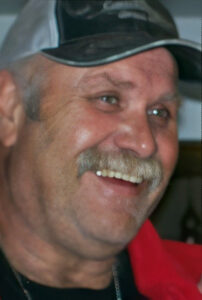
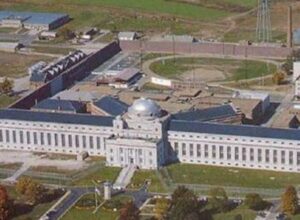 followed by 24 hours off. Then they had three days on swing shift followed by 24 hours off, and finally three days on night shift followed by 24 hours off. It gave them time to have some R and R every few days. The two weeks for leave were the normal 14 days. LJ was honorably discharged from the Army in 1971. His training would help him in his career as a Deputy Sheriff in Casper, Wyoming. I would like to thank my brother-in-law, LJ Cook for his service to his country. Today is LJ’s birthday. Happy birthday LJ!! Have a great day!! We love you!!
followed by 24 hours off. Then they had three days on swing shift followed by 24 hours off, and finally three days on night shift followed by 24 hours off. It gave them time to have some R and R every few days. The two weeks for leave were the normal 14 days. LJ was honorably discharged from the Army in 1971. His training would help him in his career as a Deputy Sheriff in Casper, Wyoming. I would like to thank my brother-in-law, LJ Cook for his service to his country. Today is LJ’s birthday. Happy birthday LJ!! Have a great day!! We love you!!
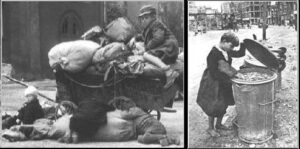 Wars leave unfortunate consequences, one of the biggest being orphaned children. World War II is no exception to that rule. After the surrender of Germany, the nation was basically split into four sections…the American Zone, the Soviet Zone, the British Zone, and the French Zone. It was all part of the denazification process. The term denazification refers to the removal of the physical symbols of the Nazi regime. In 1957 the West German government re-issued World War II Iron Cross medals, among other decorations, without the swastika in the center. That was just one of the ways that the Nazi regime was removed from Germany.
Wars leave unfortunate consequences, one of the biggest being orphaned children. World War II is no exception to that rule. After the surrender of Germany, the nation was basically split into four sections…the American Zone, the Soviet Zone, the British Zone, and the French Zone. It was all part of the denazification process. The term denazification refers to the removal of the physical symbols of the Nazi regime. In 1957 the West German government re-issued World War II Iron Cross medals, among other decorations, without the swastika in the center. That was just one of the ways that the Nazi regime was removed from Germany.
Another way was the Denazified School System and the denazification of the rest of the German government…which was then reassembled without the Nazi symbolism. With the school system effectively out of commission, the children of Berlin had very little or even no structure in their lives at all. These were children whose lives had been shredded by the war, many of whom had been orphaned by the conflict or had lost at least one parent. That lead to an overall lack of adult supervisors. Children, and especially teens and preteens, roamed the streets in packs. The situation was especially difficult for the children who had lost both parents. There weren’t any real orphanages either, and so these children formed their own “families” on the streets…like street gangs. These children were known as German “wolf children” also known as “Wolfskinder,” but the reality was that they were simply the forgotten orphans of World War II.
The schools eventually reopened, but they were often in half-ruined facilities, that were underfunded and understaffed, with some schools reporting student-to-faculty ratios of 89 to 1. That kind of a classroom ratio is far too big to be able to effectively teach the students. And the re-opened schools didn’t really address the issue of these orphaned “wolf children” who were often in hiding whenever authorities were around. These children were most likely afraid of authority, because it was the authorities who got their parents killed in the first place. Many of these children were forced to flee what was then East Prussia to Lithuania at the end of World War II. They felt like the German government had failed them. These children survived hunger, cold, and the loss of their identity, and the German government had long overlooked them, so why would they trust the government now.
No one really knows just how many “wolf children” there were. That number can only be estimated. Some say there were up to 25,000 of them roaming the woods and swamps of East Prussia and Lithuania after 1945. Russians were actually forbidden from taking in these “fascist children.” These children were actually told to go to Lithuania and given the promise that there would be food there. When they arrived, they couldn’t speak the language and they had no papers, so they had no identity…no one could even know their names. Those who were taken in often had every shred of memorabilia from their past stripped from them and tossed in the trash. That was the last part of who they really were. It was the price they would pay for food, safety, and security; and it was a failure of the German government, and the four nations who were in charge of reorganizing Germany. I suppose some would disagree with me on that note, but the reality is plain to see. If these children came across kind locals, the “Vokietukai” or little Germans, in Lithuanian, as they were known, were helped with buckets of soup in front of the doors, giving the children a little nourishment. If the residents were not so kind, they would set their dogs on the children.
While the “Vokietukai” had many struggles in Lithuania, life was still better than the fate that awaited the 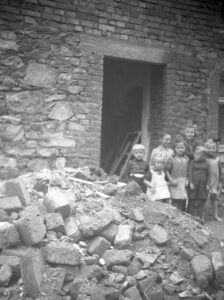
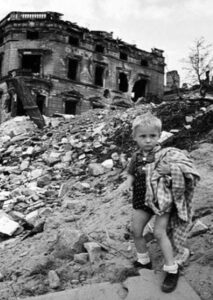 children who were too weak to make it to the Baltic states. There were thousands of these children, and they were sent to Soviet homes run by the military administration. That was the fate of approximately 4,700 German children in 1947, according to historian Ruth Leiserowitz, who has researched the fates of wolf children. Later that year, many of them were sent to the Soviet occupation zone. That zone later became the German Democratic Republic (GDR). Those poor children traveled in freight trains without any straw to sleep on…similar the Holocaust deportation years. These children were young…between 2 and 16 years of age. They arrived in East Germany after four days and four nights…really more dead than alive. There, they were put in orphanages or adopted by avid Communists. They never really escaped Communism…and that is the saddest part of all.
children who were too weak to make it to the Baltic states. There were thousands of these children, and they were sent to Soviet homes run by the military administration. That was the fate of approximately 4,700 German children in 1947, according to historian Ruth Leiserowitz, who has researched the fates of wolf children. Later that year, many of them were sent to the Soviet occupation zone. That zone later became the German Democratic Republic (GDR). Those poor children traveled in freight trains without any straw to sleep on…similar the Holocaust deportation years. These children were young…between 2 and 16 years of age. They arrived in East Germany after four days and four nights…really more dead than alive. There, they were put in orphanages or adopted by avid Communists. They never really escaped Communism…and that is the saddest part of all.
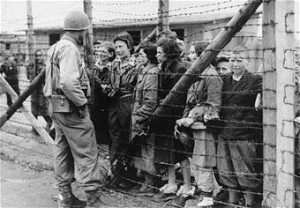 After years of being oppressed, starved, beaten, murdered, and used for experimentation, the Jewish people decided that it was their right to avenge their dead. The Nuremburg Trials were supposed to do all that, but so many of the Nazis had fled the country to escape the sentences they deserved, and once out of the country, it was almost impossible to get them back to face those sentences. In the late 1940s, under Juan Domingo Peron’s leadership (October 17, 1945 to July 1, 1974), the government secretly allowed entry of a number of war criminals fleeing Europe after Nazi Germany’s collapse, as part of the infamous ratlines. The number of Nazi fugitives that fled to Argentina surpassed 300, and included notorious war criminals such as Erich Priebke, Martin Bormann, Joseph Mengele, Eduard Roschmann, Josef Schwammberger, Walter Kutschmann, Otto Skorzeny and Holocaust administrator Adolf Eichmann, among others. In May 1960, Eichmann was kidnapped in Argentina by the Israeli Mossad and brought to trial in Israel. He was executed in 1962. At the time, Argentina condemned the Israeli government for abducting Eichmann, leading to a diplomatic spat between the nations.
After years of being oppressed, starved, beaten, murdered, and used for experimentation, the Jewish people decided that it was their right to avenge their dead. The Nuremburg Trials were supposed to do all that, but so many of the Nazis had fled the country to escape the sentences they deserved, and once out of the country, it was almost impossible to get them back to face those sentences. In the late 1940s, under Juan Domingo Peron’s leadership (October 17, 1945 to July 1, 1974), the government secretly allowed entry of a number of war criminals fleeing Europe after Nazi Germany’s collapse, as part of the infamous ratlines. The number of Nazi fugitives that fled to Argentina surpassed 300, and included notorious war criminals such as Erich Priebke, Martin Bormann, Joseph Mengele, Eduard Roschmann, Josef Schwammberger, Walter Kutschmann, Otto Skorzeny and Holocaust administrator Adolf Eichmann, among others. In May 1960, Eichmann was kidnapped in Argentina by the Israeli Mossad and brought to trial in Israel. He was executed in 1962. At the time, Argentina condemned the Israeli government for abducting Eichmann, leading to a diplomatic spat between the nations.
There was a financial incentive for Argentina to accept these war criminals, and they needed to provide a safe haven for them. Wealthy Germans and Argentine businessmen of German descent were willing to pay the way for escaping Nazis. The initial plan of the fleeing Nazis was to regroup, lay low for a while, and then come back with a vengeance. The Holocaust years had been very profitable for the Nazis. Nazi leaders had plundered untold millions from the Jews they murdered and some of that money accompanied them to Argentina…meaning the Argentine economy was helped by the war criminals…another incentive to help them hide out.
Some of the smarter Nazi officers and collaborators saw the writing on the wall as early as 1943 and began hiding gold, money, valuables, paintings, and more. They often moved their plunder to Switzerland. Ante Pavelic and his cabal of close advisors had several chests full of gold, jewelry, and art they had stolen from their Jewish and Serbian victims. These riches eased their passage to Argentina considerably. Disappearing, even in 1945 was not an easy matter, but if one had money, it was far more possible. The war criminals even paid off British officers to let them through Allied lines…a treasonous act for which those British officers should have 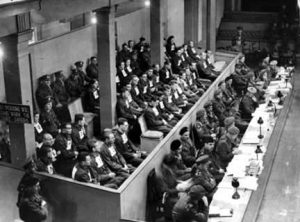 also been prosecuted and hung. Sometimes the corruption in government and military entities, even those who are supposed to be on the side of good, is absolutely astounding.
also been prosecuted and hung. Sometimes the corruption in government and military entities, even those who are supposed to be on the side of good, is absolutely astounding.
After the World War II, and the release of the surviving Jews, the Nuremburg Trials convicted these evil monsters, but many of them were gone before their sentence could be carried out. Enter the Nokmim, a group of Jewish men, also referred to as The Avengers or the Jewish Avengers. These men were a Jewish partisan militia, formed by Abba Kovner and his lieutenants Vitka Kempner and Rozka Korczak from the surviving remnants of the United Partisan Organization (Fareynikte Partizaner Organizatsye), which operated in Lithuania under Soviet command. Elements of the Nokmim collaborated with veterans of the Jewish brigade in British Palestine to form a new organization called Nakam, a group of assassins that targeted Nazi war criminals with the aim of avenging the Holocaust. The name comes from the phrase (Dam Yehudi Nakam – “Jewish Blood Will Be Avenged”) (the acronym DIN means “judgement”).
The Nakam (“vengeance”) Group was the most extremist group. They numbered around 60 Jews who were former Partisans, as well as other Jews who survived the Holocaust. This group was not about to let these men get away with all the atrocities they put their Jewish captives through, and then just walk away without punishment…not if they could help it. The group arrived in Germany after the war in order to conduct more complicated and fatal vengeance operations. Their ultimate purpose was to carry out an operation that would cause a broad international response…a warning, if you will, to anyone who might consider trying to harm Jews again, as the Nazis had. They needed to show the world that they would never be treated in such a way again. They would fight back…every time. Notables among the Hanakam group were Abba Kovner, Yitzhak Avidav, and Bezalel Michaeli. The group attempted a couple of mass poisonings, the first of the water supplies of Munich, Berlin, Weimar, Nuremberg and Hamburg, which failed when the poison had to be thrown overboard on a ship when Kovner was discovered to be carrying forges documents. The other attempt was with 3,000 loaves of bread painted with diluted arsenic, headed for 15,000 German POWs from the Langwasser internment camp near Nuremberg. The camp was under US authority. On April 23, 1946, it was reported that 2,283 German prisoners of war had fallen ill from poisoning, with 207 hospitalized and seriously ill. According to Harmatz, 300 to 400 Germans died. He said this “was nothing compared with what we really wanted to do.” A 2016 report by the Associated Press countered that the operation ultimately caused no known deaths, despite documents obtained through a Freedom of Information Act request to the National Archives and Records Administration 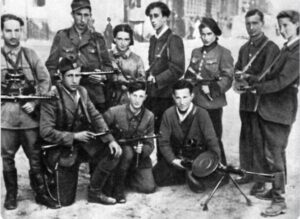 stating the arsenic found in the bakery was enough to kill approximately 60,000 persons. Apparently, the arsenic was spread too thin to be lethal.
stating the arsenic found in the bakery was enough to kill approximately 60,000 persons. Apparently, the arsenic was spread too thin to be lethal.
It’s hard to say just how much information is correct and how much is incorrect. I suppose it depends on who is reporting, and how accurately they want to report what they have. Propaganda in any war runs rampant, so we will likely never know. Records can and do go missing, especially when someone wants to disprove their enemies. Whether so many people died by poisoning or not, the Nokmim and the spin-off Nakam brought vengeance on many of the Nazis who would have escaped justice without them.
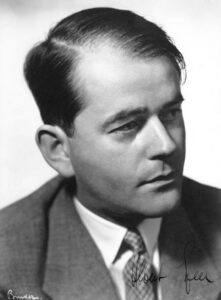 As Hitler continued his reign of terror over the people of Germany, in his quest to rule the world, he decided that he needed to destroy much of the German infrastructure so that the Allied forces couldn’t use it as they penetrated deep withing the borders of Germany. Hitler must have known by now that he was losing this war, even in his crazed state, so he was trying to find a way to turn the tide.
As Hitler continued his reign of terror over the people of Germany, in his quest to rule the world, he decided that he needed to destroy much of the German infrastructure so that the Allied forces couldn’t use it as they penetrated deep withing the borders of Germany. Hitler must have known by now that he was losing this war, even in his crazed state, so he was trying to find a way to turn the tide.
The Nero Decree (German: Nerobefehl) was the order issued by Hitler on March 19, 1945, right after the Allies captured the final bridge on the Rhine River that allowed access into Germany. The Nero Decree ordered the destruction of large numbers of bridges in Germany. The official name was Decree Concerning Demolitions in the Reich Territory (Befehl betreffend Zerstörungsmaßnahmen im Reichsgebiet), but that is rather a long name, so it became known as the Nero Decree, after the Roman Emperor Nero, who, according to an apocryphal story, “engineered the Great Fire of Rome in 64 AD.”

This act would have wiped out all of Germany’s industry and infrastructure just to keep it from falling under Allied control. Hitler didn’t care about that or about the people who would be affected. The actual task of carrying out such destruction fell to Germany’s armaments minister…and Hitler’s friend, Albert Speer. Speer knew that to follow the order would have a ruinous effect on the German people, so like Von Choltitz, who had disobeyed the order to burn Paris, Speer deliberately disobeyed the order of his friend, who he suspected was mentally unstable. In addition, Speer also issued encrypted alternate orders to delay the destruction. In the end, the Nero Decree wasn’t carried out at all, something which I’m quite certain drove Hitler totally insane.
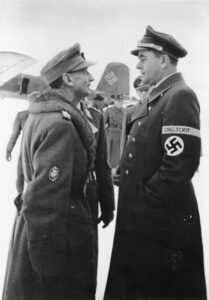
Speer was one of the highest-ranking members of German leadership to survive the war. He attempted to promote himself as someone who stood up to Hitler. While history does credit him with refusing to follow the Nero Decree, it did not completely exonerate him. Speer was an architect, and he wanted to preserve many buildings he had designed. Berthold Konrad Hermann Albert Speer, born March 19, 1905, in Mannheim, into an upper-middle-class family. He was the second of three sons of Luise Máthilde Wilhelmine (Hommel) and Albert Friedrich Speer. He was a German architect who served as the Minister of Armaments and War Production in Nazi Germany during most of World War II. He was also a close ally of Adolf Hitler, a relationship which would cause him to be convicted at the Nuremberg trials and sentenced to 20 years in prison. Speer returned to London in 1981 to participate in the BBC Newsnight program. He suffered a stroke and died in London on September 1, 1981.
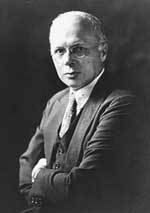 Modern medicine has come a long way through the advances of a number of people, one of the greatest being Richard Lewisohn. Born July 12, 1875, in Hamburg, Germany, Lewisohn studied medicine at the University of Freiburg, which is still one of the most prestigious medical schools in Europe. He obtained his medical degree in 1899, and in 1906, he immigrated to New York. Lewisohn’s initial interest was in the digestive system (gastroenterology). He began his work at Mount Sinai Hospital, but, it ended up being his work with blood transfusions that made him the medical hero he was.
Modern medicine has come a long way through the advances of a number of people, one of the greatest being Richard Lewisohn. Born July 12, 1875, in Hamburg, Germany, Lewisohn studied medicine at the University of Freiburg, which is still one of the most prestigious medical schools in Europe. He obtained his medical degree in 1899, and in 1906, he immigrated to New York. Lewisohn’s initial interest was in the digestive system (gastroenterology). He began his work at Mount Sinai Hospital, but, it ended up being his work with blood transfusions that made him the medical hero he was.
The blood is a complicated matter, and the study of the blood, or rather the experimentational use of the blood, often ended with tragic, and even fatal results. Of course, much of the problem came from having no understanding, or even any knowledge of blood types. The discovery of blood types didn’t come about until 1901, when Karl Landsteiner discovered that blood consisted of different types. Some types were compatible and could be transfused, leading to healing, but other types coagulated when mixed and would kill you. It was an amazing discovery, but Landsteiner’s discovery did not change medicine overnight. Doctors still faced the the fact that when blood was removed to transfuse into another person, it quickly clotted, making it unusable. That led to a direct method of transfusion, crazy in and of itself, in which doctors would sew the veins and arteries of the donor and the recipient together. Maybe it worked, but it just wasn’t practical. Not only did you have to have a donor with the correct type on hand, but the physician didn’t know how much blood was being pumped into the patient, or out  of the donor, for that matter. They needed a way to have blood on hand, and in measurable containers, all without having to deal with spoilage.
of the donor, for that matter. They needed a way to have blood on hand, and in measurable containers, all without having to deal with spoilage.
In April 1914, a Belgian physician named Albert Hustin, proved that sodium citrate could be used as an anticoagulant in diluted blood. Lewisohn immediately jumped upon this insight and set up detailed experiments using sodium citrate and dog blood. Through Lewisohn’s experiments transfusing dogs, he was able to determine the exact concentration of sodium citrate that was both safe and effective for blood transfusions. He was also able to keep the extracted blood viable for two days prior to transfusion. More study would eventually increase that timeframe up to 14 days.
This was exactly what the world needed…blood could be stored, and made available as needed. Lewisohn’s work led to the storage of blood in blood banks. It is a discovery that is credited with saving over 1 billion lives to date. Lewisohn’s discovery, occurring at the time of World War I, as well as his findings concerning blood storage for transfusions was used as a method to save the lives of wounded soldiers. Use of blood transfusions  expanded after the war. By the 1930s Blood Banks became common in cities worldwide, making blood transfusions the most important lifesaving medical advance in history.
expanded after the war. By the 1930s Blood Banks became common in cities worldwide, making blood transfusions the most important lifesaving medical advance in history.
In 1955 Lewisohn received the American Association of Blood Banks’ Karl Landsteiner Memorial Award. In January 1959 he became an honorary fellow of the Royal College of Surgeons of England, having been a fellow of the American College of Surgeons since 1916. Lewisohn was also a Fellow of the American Gastroenterological Association, and served on the American Board of Surgery. He passed away (probably of natural causes, but I cannot confirm that) on August 11, 1961 in New York City. He was 86 years old.
 On this day, August 21, 1911, an amateur painter decided to paint a painting near Leonardo da Vinci’s famed Mona Lisa, only to find out that someone had walked into the Louvre that morning, taken the priceless painting off the wall, hidden it under his clothing, and walked out of the museum. The first thought is, of course, who would be so brazen, but my second thought is how could he have pulled that off? How much clothing would it take to simply “tuck” a 20 inch by 30 inch painting into his clothing. Nevertheless, earlier that day, Vincenzo Perugia had walked into the Louvre, removed the famed painting from the wall, hid it beneath his clothes, and escaped.
On this day, August 21, 1911, an amateur painter decided to paint a painting near Leonardo da Vinci’s famed Mona Lisa, only to find out that someone had walked into the Louvre that morning, taken the priceless painting off the wall, hidden it under his clothing, and walked out of the museum. The first thought is, of course, who would be so brazen, but my second thought is how could he have pulled that off? How much clothing would it take to simply “tuck” a 20 inch by 30 inch painting into his clothing. Nevertheless, earlier that day, Vincenzo Perugia had walked into the Louvre, removed the famed painting from the wall, hid it beneath his clothes, and escaped.
The theft, somehow carried out in complete secrecy, left the entire nation of France is shock. There were many theories as to what could have happened to the priceless painting. Strangely, professional thieves were not on the list of suspects, because they would have realized that it would be too dangerous to try to sell the world’s most famous painting. I suppose that a private art collector might have hired a professional to steal it for a secret collection, but that didn’t seem to be the case. One theory, or 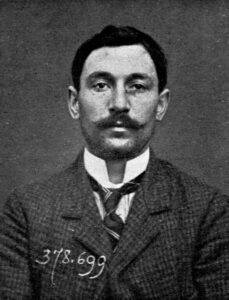 rumor really, in Paris was that the Germans had stolen it to humiliate the French. I’m not sure that made any sense before either of the world wars, but I guess tensions between the nations could have been on the rise then.
rumor really, in Paris was that the Germans had stolen it to humiliate the French. I’m not sure that made any sense before either of the world wars, but I guess tensions between the nations could have been on the rise then.
For two years, investigators and detectives searched for the painting without finding any real leads. Then in November 1913, the thief mad his first move…the one that would eventually bring his doom. Italian art dealer Alfredo Geri received a letter from a man calling himself Leonardo. It indicated that the Mona Lisa was in Florence and would be returned for a hefty ransom. Why he waited two years to ask for a ransom is beyond me, other than the fear of getting caught. The meet was set to pay the ransom, and when Perugia attempted to receive the ransom, he was captured. The painting was recovered, unharmed.
In a way, you could say that this was an inside job. Perugia knew his way around, and knew areas where the 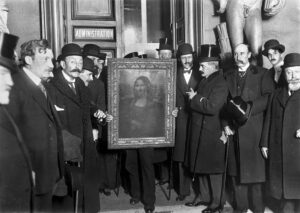 Louvre might be vulnerable. Perugia, a former employee of the Louvre, claimed that he had acted out of a patriotic duty to avenge Italy on behalf of Napoleon. That claim was disproven when prior robbery convictions and Perugia’s diary, with a list of art collectors, caused most people to believe that he had acted solely out of greed. Perugia served seven months of a one-year sentence and later served in the Italian army during the First World War. The Mona Lisa is back in the Louvre, where improved security measures are now in place to protect it. I guess that one good thing came of the theft…better security. Of course, that might have come with technological advances anyway.
Louvre might be vulnerable. Perugia, a former employee of the Louvre, claimed that he had acted out of a patriotic duty to avenge Italy on behalf of Napoleon. That claim was disproven when prior robbery convictions and Perugia’s diary, with a list of art collectors, caused most people to believe that he had acted solely out of greed. Perugia served seven months of a one-year sentence and later served in the Italian army during the First World War. The Mona Lisa is back in the Louvre, where improved security measures are now in place to protect it. I guess that one good thing came of the theft…better security. Of course, that might have come with technological advances anyway.

